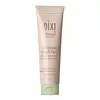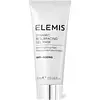What's inside
What's inside
 Key Ingredients
Key Ingredients

 Benefits
Benefits

 Concerns
Concerns

 Ingredients Side-by-side
Ingredients Side-by-side

Glycerin
HumectantPropanediol
SolventHydroxyethyl Acrylate/Sodium Acryloyldimethyl Taurate Copolymer
Emulsion StabilisingPhenoxyethanol
PreservativePolysorbate 20
EmulsifyingWater
Skin ConditioningLecithin
EmollientLavandula Angustifolia Oil
MaskingCitrus Aurantium Dulcis Peel Oil
MaskingCitrus Aurantifolia Oil
CleansingCitric Acid
BufferingPotassium Sorbate
PreservativeEthylhexylglycerin
Skin ConditioningPropylene Glycol
HumectantButylene Glycol
Humectant1,2-Hexanediol
Skin ConditioningAcetyl Hexapeptide-8
HumectantCamellia Japonica Flower Extract
EmollientChamomilla Recutita Extract
Skin ConditioningSalvia Officinalis Extract
AntimicrobialRosa Canina Fruit Extract
AstringentJasminum Officinale Extract
MaskingMentha Viridis Extract
MaskingLavandula Angustifolia Extract
Skin ConditioningRosmarinus Officinalis Leaf Extract
AntimicrobialMelilotus Officinalis Extract
AstringentAcacia Seyal Gum Extract
HumectantAvena Strigosa Seed Extract
Skin ConditioningBeta-Glucan
Skin ConditioningGlycerin, Propanediol, Hydroxyethyl Acrylate/Sodium Acryloyldimethyl Taurate Copolymer, Phenoxyethanol, Polysorbate 20, Water, Lecithin, Lavandula Angustifolia Oil, Citrus Aurantium Dulcis Peel Oil, Citrus Aurantifolia Oil, Citric Acid, Potassium Sorbate, Ethylhexylglycerin, Propylene Glycol, Butylene Glycol, 1,2-Hexanediol, Acetyl Hexapeptide-8, Camellia Japonica Flower Extract, Chamomilla Recutita Extract, Salvia Officinalis Extract, Rosa Canina Fruit Extract, Jasminum Officinale Extract, Mentha Viridis Extract, Lavandula Angustifolia Extract, Rosmarinus Officinalis Leaf Extract, Melilotus Officinalis Extract, Acacia Seyal Gum Extract, Avena Strigosa Seed Extract, Beta-Glucan
Water
Skin ConditioningPolysorbate 20
EmulsifyingGlycerin
HumectantMenthyl Lactate
MaskingPropanediol
SolventPropylene Glycol
HumectantTromethamine
BufferingPhenoxyethanol
PreservativeCarbomer
Emulsion StabilisingButylene Glycol
HumectantBambusa Arundinacea Stem Extract
Skin ConditioningXanthan Gum
EmulsifyingPEG-120 Methyl Glucose Dioleate
EmulsifyingParfum
MaskingChlorphenesin
AntimicrobialDisodium EDTA
Papain
Skin ConditioningMannitol
HumectantSodium Dehydroacetate
PreservativeMalpighia Glabra Fruit Extract
Skin ConditioningBehenyl Alcohol
EmollientButyrospermum Parkii Butter
Skin ConditioningArctium Majus Root Extract
Skin ConditioningCitric Acid
BufferingGlycolic Acid
BufferingHydrogenated Castor Oil
EmollientStearyl Alcohol
EmollientCaramel
Cosmetic ColorantZinc Sulfate
AntimicrobialSubtilisin
Skin ConditioningProtease
ExfoliatingPoria Cocos Extract
Skin ConditioningAcetyl Tetrapeptide-9
Skin ConditioningBiotin
AntiseborrhoeicPotassium Sorbate
PreservativeWater, Polysorbate 20, Glycerin, Menthyl Lactate, Propanediol, Propylene Glycol, Tromethamine, Phenoxyethanol, Carbomer, Butylene Glycol, Bambusa Arundinacea Stem Extract, Xanthan Gum, PEG-120 Methyl Glucose Dioleate, Parfum, Chlorphenesin, Disodium EDTA, Papain, Mannitol, Sodium Dehydroacetate, Malpighia Glabra Fruit Extract, Behenyl Alcohol, Butyrospermum Parkii Butter, Arctium Majus Root Extract, Citric Acid, Glycolic Acid, Hydrogenated Castor Oil, Stearyl Alcohol, Caramel, Zinc Sulfate, Subtilisin, Protease, Poria Cocos Extract, Acetyl Tetrapeptide-9, Biotin, Potassium Sorbate
Ingredients Explained
These ingredients are found in both products.
Ingredients higher up in an ingredient list are typically present in a larger amount.
Butylene Glycol (or BG) is used within cosmetic products for a few different reasons:
Overall, Butylene Glycol is a safe and well-rounded ingredient that works well with other ingredients.
Though this ingredient works well with most skin types, some people with sensitive skin may experience a reaction such as allergic rashes, closed comedones, or itchiness.
Learn more about Butylene GlycolCitric Acid is an alpha hydroxy acid (AHA) naturally found in citrus fruits like oranges, lemons, and limes.
Like other AHAs, citric acid can exfoliate skin by breaking down the bonds that hold dead skin cells together. This helps reveal smoother and brighter skin underneath.
However, this exfoliating effect only happens at high concentrations (20%) which can be hard to find in cosmetic products.
Due to this, citric acid is usually included in small amounts as a pH adjuster. This helps keep products slightly more acidic and compatible with skin's natural pH.
In skincare formulas, citric acid can:
While it can provide some skin benefits, research shows lactic acid and glycolic acid are generally more effective and less irritating exfoliants.
Most citric acid used in skincare today is made by fermenting sugars (usually from molasses). This synthetic version is identical to the natural citrus form but easier to stabilize and use in formulations.
Read more about some other popular AHA's here:
Learn more about Citric AcidGlycerin is already naturally found in your skin. It helps moisturize and protect your skin.
A study from 2016 found glycerin to be more effective as a humectant than AHAs and hyaluronic acid.
As a humectant, it helps the skin stay hydrated by pulling moisture to your skin. The low molecular weight of glycerin allows it to pull moisture into the deeper layers of your skin.
Hydrated skin improves your skin barrier; Your skin barrier helps protect against irritants and bacteria.
Glycerin has also been found to have antimicrobial and antiviral properties. Due to these properties, glycerin is often used in wound and burn treatments.
In cosmetics, glycerin is usually derived from plants such as soybean or palm. However, it can also be sourced from animals, such as tallow or animal fat.
This ingredient is organic, colorless, odorless, and non-toxic.
Glycerin is the name for this ingredient in American English. British English uses Glycerol/Glycerine.
Learn more about GlycerinPhenoxyethanol is a preservative that has germicide, antimicrobial, and aromatic properties. Studies show that phenoxyethanol can prevent microbial growth. By itself, it has a scent that is similar to that of a rose.
It's often used in formulations along with Caprylyl Glycol to preserve the shelf life of products.
Polysorbate 20 is made by combining ethoxylation of sorbitan, ethylene oxide, and lauric acid. It is a mild cleansing agent, surfactant, and emulsifier.
As a surfactant, it helps collect dirt and oils for washing. Emulsifiers prevent oils and water from separating.
Polysorbate 20 also adds scent to a product. Since it is made using sorbitol, it has a sweet scent. Sorbitol can also be found in fruits such as apples and peaches.
The lauric acid used to create Polysorbate 20 is often derived from coconuts.
Polysorbate 20 may not be fungal acne safe.
Learn more about Polysorbate 20Potassium Sorbate is a preservative used to prevent yeast and mold in products. It is commonly found in both cosmetic and food products.
This ingredient comes from potassium salt derived from sorbic acid. Sorbic acid is a natural antibiotic and effective against fungus.
Both potassium sorbate and sorbic acid can be found in baked goods, cheeses, dried meats, dried fruit, ice cream, pickles, wine, yogurt, and more.
You'll often find this ingredient used with other preservatives.
Learn more about Potassium SorbatePropanediol is an all-star ingredient. It softens, hydrates, and smooths the skin.
It’s often used to:
Propanediol is not likely to cause sensitivity and considered safe to use. It is derived from corn or petroleum with a clear color and no scent.
Learn more about PropanediolPropylene Glycol is an odorless, colorless liquid. As a humectant, it helps skin retain moisture. It also aids in delivering active ingredients.
Another role of this ingredient is preventing a product from melting or freezing. Propylene glycol also adds antimicrobrial properties to a product, elongating product lifespan.
This ingredient is considered an organic alcohol and commonly added into both cosmetics and foods.
Those with sensitive skin or conditions may develop a rash when using this ingredient.
Learn more about Propylene GlycolWater. It's the most common cosmetic ingredient of all. You'll usually see it at the top of ingredient lists, meaning that it makes up the largest part of the product.
So why is it so popular? Water most often acts as a solvent - this means that it helps dissolve other ingredients into the formulation.
You'll also recognize water as that liquid we all need to stay alive. If you see this, drink a glass of water. Stay hydrated!
Learn more about Water